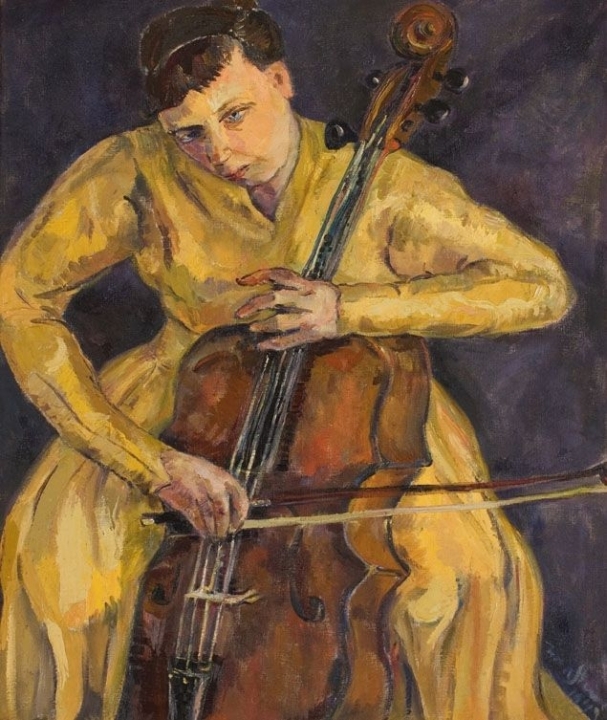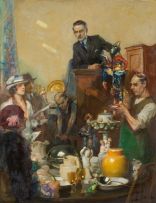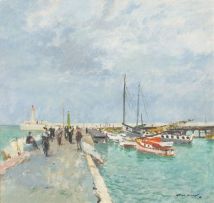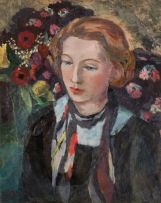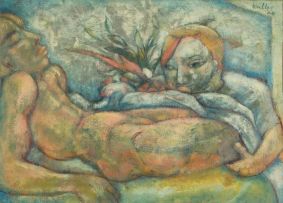Important South African Art
Live Auction, 16 May 2011
Session Two
About this Item
signed and dated 43
Notes
This remarkable painting by Irma Stern, hidden from public view for over thirty years, has only recently come to light. With her astute eye for capturing the essentials, the artist has portrayed a young girl playing her cello in such a way that she appears to envelop the instrument, transforming the musician and cello into one whole. Her head leans forward and her body hunches over the instrument so that all attention is focused on her hands - the left hand with fingers arched to achieve the perfect chord and the right hand elegantly drawing the bow across the strings.
Her sensitively painted face is a study in concentrated energy while her taut body is draped in a golden gown with warm tones and fluid brushstrokes evoking the flow of music. The result is a strong cultural statement forging the sublime sounds of music with the dynamism and vigour of one of South Africa's finest painters.
The cello is most closely associated with European classical music and has been described as the closest sounding instrument to the human voice. From Bach's Baroque works for the cello through Classical concertos by Haydn and Beethoven's sonatas for cello and pianoforte to the Romantic repertoires of Schumann, Dvorák and Brahms and twentieth-century compositions by Elgar, Debussy, Prokofiev, Shostakovich and Britten, the cello has been a critical part of orchestral music.
As part of an educated elite, Stern would have known theatre personalities and musicians in Cape Town, where she lived and in Johannesburg, where she stayed with friends while preparing her exhibitions. This young girl playing her cello must have captivated her imagination to such an extent that she was moved to produce this extraordinary painting, unlike any other in her oeuvre.
Stern was at the height of her powers as an artist when she produced this painting in 1943. As leading academic, art critic and former Director of the Irma Stern Museum, Neville Dubow, maintained:
The point is simply this: in the period between the First and Second World Wars, Irma Stern's work achieved a peak of excellence that could stand comparison with representational paintings anywhere else in the West. ... judged purely by the yardstick of dynamic painting - perceptual and sensual, rather than conceptual and intellectual, sheer picture-making, in fact - one could claim international stature for her work of the 1940s. Nationally ... there was no one to touch her in terms of her impact on the local scene.i
i Neville Dubow, Irma Stern, C. Struik Publishers, Cape Town, 1974, page 20.
